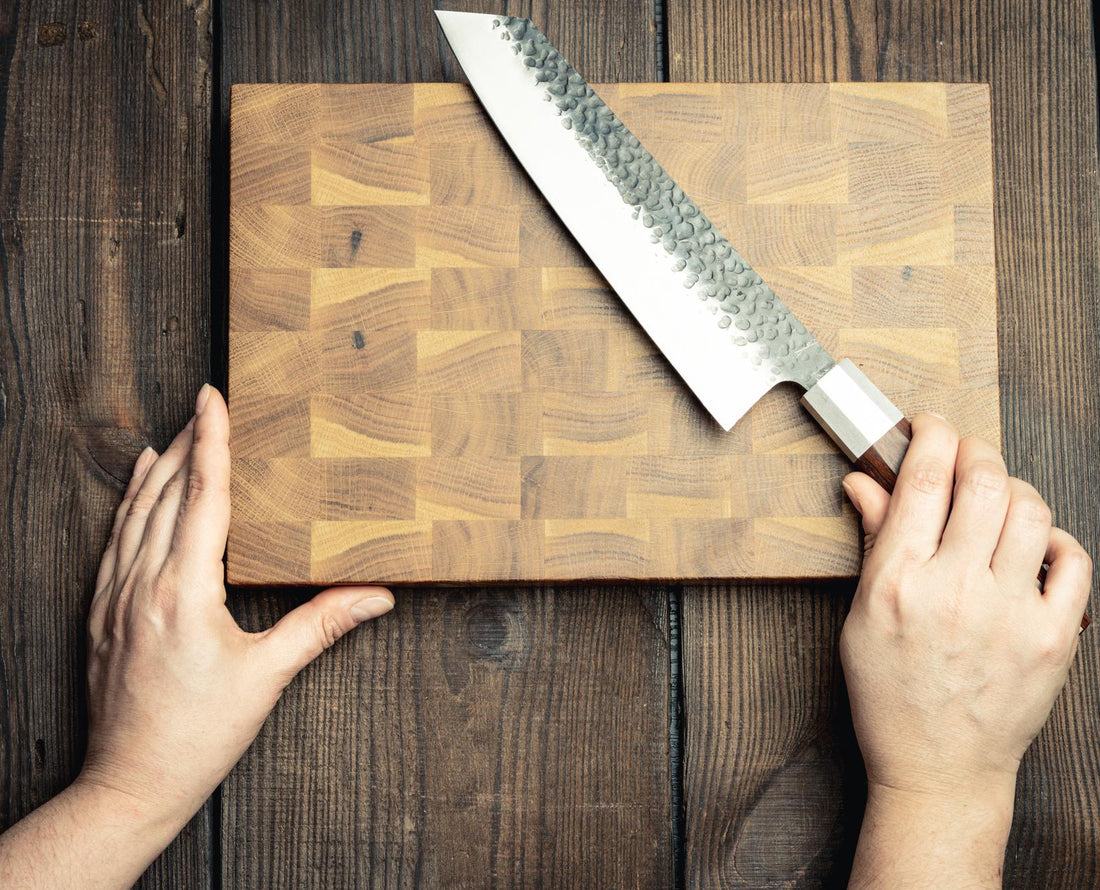Sapele is a good choice for cutting boards because of its durability and resistance to water.
It can withstand heavy use, resist stains and moisture, making it suitable for kitchen and food preparation purposes. The tight grain structure of Sapele also prevents bacterial growth, ensuring a hygienic surface for cutting and chopping. Additionally, Sapele's rich reddish-brown color and attractive grain patterns add aesthetic appeal to any kitchen.
So, if you're looking for a reliable and attractive option for your cutting board, Sapele is a great choice.
Benefits Of Sapele For Cutting Boards
When considering the ideal wood for cutting boards, Sapele emerges as a top choice due to its numerous benefits. One of the standout features of Sapele is its durability and longevity. This dense hardwood is incredibly strong, making it resistant to scratches and nicks, ensuring a long lifespan for your cutting board.
Another advantage of Sapele is its resistance to moisture and warping. As a tropical wood, Sapele naturally contains oils that repel water, reducing the risk of damage caused by exposure to moisture. This makes it an excellent choice for a cutting board as it can withstand regular use and cleaning without warping or deteriorating.
In addition to its durability and moisture resistance, Sapele also possesses natural antimicrobial properties. These properties inhibit the growth of bacteria and fungi, keeping your cutting board hygienic and safe for food preparation.
Preparing Sapele For Cutting Board Construction
Before using sapele wood for a cutting board, it is essential to dry and condition the wood properly. This helps to stabilize the wood and prevent it from warping or cracking over time. Wood should be kiln-dried or air-dried to reach the proper moisture content before beginning construction.
Choosing the right dimensions for the cutting board is also important. Consider the desired size and shape of the board, as well as the available sapele wood. Ensure the thickness is sufficient for durability and the width and length meet the desired specifications.

Sapele Vs. Other Wood Species For Cutting Boards
Comparing Sapele to maple
Sapele and maple are both popular choices for cutting boards due to their natural beauty and durability.
Sapele is known for its rich reddish-brown color and interlocked grain, which adds an elegant touch to any kitchen.
Maple, on the other hand, has a lighter color and a straight grain pattern. In terms of hardness, sapele ranks lower than maple on the Janka hardness scale.
This makes maple a slightly better choice if you prefer a harder surface for cutting. However, sapele is still a durable option that can withstand regular use.
Sapele vs. walnut
Walnut is another popular wood species for cutting boards. It is darker in color compared to sapele and has a straight grain pattern. Both sapele and walnut have similar hardness levels, making them suitable for cutting boards.
The choice between the two comes down to personal preference. If you prefer a darker, more uniform look, walnut may be the better option.
Sapele vs. bamboo
Bamboo cutting boards have gained popularity due to their sustainability and strength. Sapele differs from bamboo in terms of aesthetics and hardness. While sapele offers a warm, natural look with its reddish-brown color, bamboo has a lighter and more uniform appearance.
In terms of hardness, sapele is generally harder than bamboo. However, bamboo cutting boards are known for their durability and ability to resist knife marks. If sustainability is a priority for you, bamboo may be the better choice. Otherwise, sapele offers a unique and elegant option for cutting boards.
Maintaining And Caring For A Sapele Cutting Board
Sapele wood is an excellent choice for cutting boards due to its durability and resistance to moisture. Regular cleaning and sanitization are crucial in maintaining the hygienic condition of the cutting board.
To clean the board, rinse it with warm water and mild soap, then scrub it gently with a brush or sponge. Ensure the board is completely dry before storage to prevent moisture damage.
Seasoning and oiling the board are also essential for preserving its longevity. Apply a food-safe mineral oil or beeswax conditioner to the surface of the board in a circular motion, allowing it to soak in for a few hours before wiping off the excess. This process helps to maintain moisture levels and prevents the wood from drying out and cracks from forming.
Frequently Asked Questions
Is Sapele wood safe for food contact in cutting boards?
Yes, Sapele wood is safe for food contact when used in cutting boards. It is a hardwood with no toxic properties, making it suitable for kitchen applications.
Is Sapele as hard as maple for cutting boards?
Sapele is slightly less hard than maple, but it is still considered a hardwood and is durable enough for use in cutting boards. It offers a good balance of hardness and workability.
Can Sapele cutting boards be used for both cutting and serving food?
Yes, Sapele cutting boards can double as serving platters due to their attractive appearance. Just make sure to clean them thoroughly between uses.
Are there any downsides to using Sapele for cutting boards?
One potential downside is that Sapele wood can be more expensive than some other hardwoods. Additionally, it may have a distinct odor when cut, which fades over time.
Can I customize or personalize a Sapele cutting board?
Yes, Sapele cutting boards can be customized with engravings, designs, or personalization. This can make them unique and suitable as gifts.
Conclusion
To sum up, Sapele is an excellent choice for cutting boards due to its durability and attractive grain pattern. With its natural resistance to fungi and insects, Sapele ensures a long-lasting and hygienic surface for food preparation. This hardwood provides a balance between strength and flexibility, making it ideal for withstanding the demands of chopping, slicing, and dicing.
Whether you're a professional chef or a home cook, a Sapele cutting board is a solid investment that will enhance your culinary experience.

